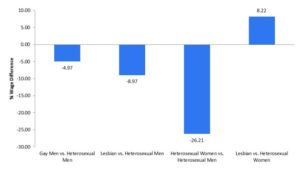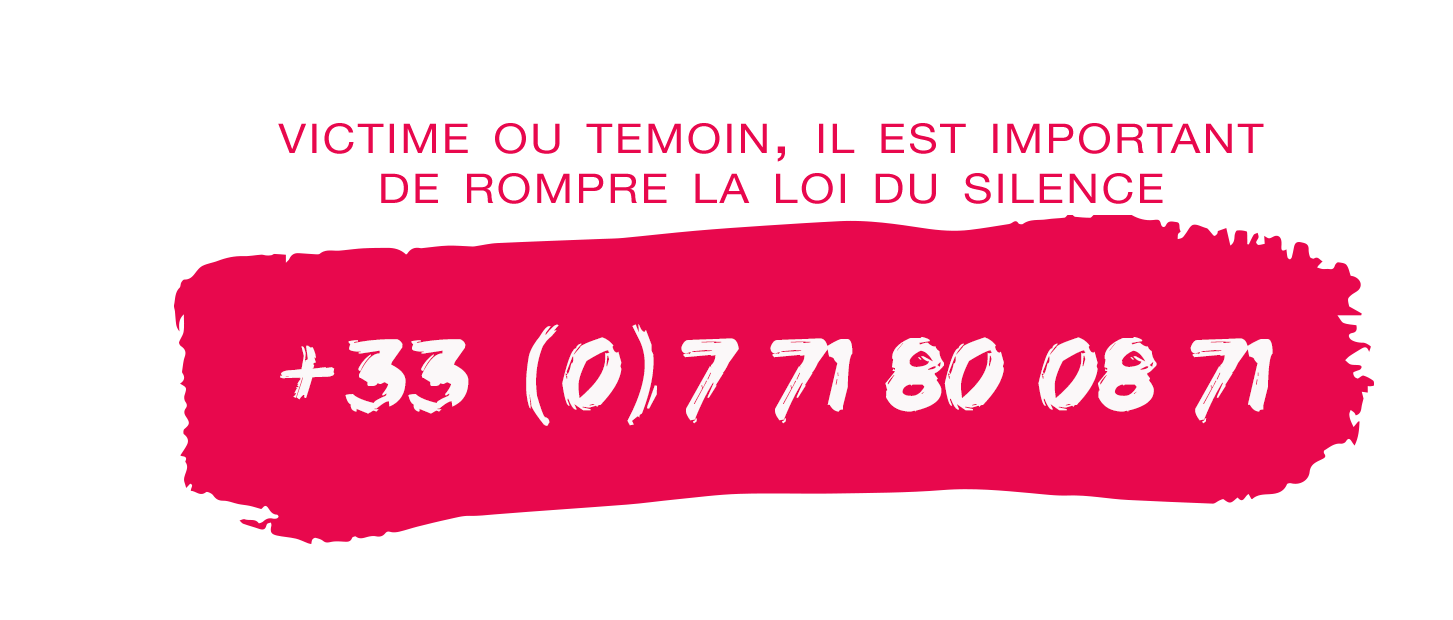>> Unequal Pay: The Gay Wage Gap
[spacer]
Les discriminations salariales ne se résument pas au sexe ou à la couleur de peau. Une étude canadienne, parue en mai dans la revue scientifique Gender and Society et reprise récemment par le mensuel américain The Atlantic montre qu’il existe un écart salarial entre homos et hétéros («gay-straight wage gap»).
Selon l’étude, qui porte uniquement sur les personnes en couple, les homosexuels de sexe masculin gagneraient 5% de moins que les hétérosexuels. Les lesbiennes, elles, ne sembleraient pas souffrir de discriminations, puisque leur rémunération serait supérieure de 8% à celle des hétérosexuelles. Un écart qui reste tout de même bien inférieur à celui entre hommes hétérosexuels et femmes hétérosexuelles (26% de moins).
L’étude, réalisée par deux étudiants candidats au doctorat de l’université McGill à Montréal, se base sur les chiffres du recensement canadien, dans lequel les sondés doivent indiquer leur orientation sexuelle et leur salaire.
Des conclusions partagées par plusieurs autres études
Leurs conclusions – les hommes gays gagnent moins que leurs collègues hétéros, les lesbiennes plus – ne sont pas nouvelles. L’une des recherches majeures sur le sujet, parue en 2007, révélait qu’à qualifications égales, les gays et les bisexuels gagnaient entre 10 et 32% de moins que les hétéros. Récemment, une étude australienne évoquait des écarts plus importants (20% de moins pour les hommes, 33% de plus pour les femmes), tandis qu’une étude américaine suggérait que cet écart salarial avait considérablement diminué ces dernières années aux Etats-Unis (passant de 8% à la fin des années 90 à 4,5% dans les années 2000).
 L’écart salarial est aussi une réalité en France. Une étude réalisée par les économistes Thierry Laurent et Ferhat Mihoubi et révélée par Libération en 2010, montrait que dans le privé, les gays gagnaient 6,5% de moins que les hétéros dans des conditions de travail équivalentes (5,5% dans le public). Là encore, les salaires des homosexuelles seraient légèrement supérieurs (2%) à ceux des hétérosexuelles.
L’écart salarial est aussi une réalité en France. Une étude réalisée par les économistes Thierry Laurent et Ferhat Mihoubi et révélée par Libération en 2010, montrait que dans le privé, les gays gagnaient 6,5% de moins que les hétéros dans des conditions de travail équivalentes (5,5% dans le public). Là encore, les salaires des homosexuelles seraient légèrement supérieurs (2%) à ceux des hétérosexuelles.
Comment expliquer cet écart de salaires entre homos et hétéros ? L’homophobie, consciente ou inconsciente, n’est pas le seul facteur. Une étude de 2013 laisse entendre que les hommes hétérosexuels occuperaient des postes dans des branches plus rémunératrices (sciences, ingénierie…). Les femmes lesbiennes, moins susceptibles d’avoir des enfants, pourraient de leur côté davantage se concentrer sur leur carrière que les femmes hétéros. Les auteurs de la nouvelle étude canadienne, qui ne portent que sur les salariés en couple, avancent une explication supplémentaire : les hommes gagnant plus que les femmes, les couples d’hommes se contenteraient de leurs deux salaires alors que les couples de femmes, elles, redoubleraient d’efforts pour compenser cet écart.
[spacer]
>> Certain wage gaps have been poked, prodded, analyzed, and bickered over so frequently that they’re by now common knowledge; even if few agree as to what causes them or what to do about them, most people acknowledge that male-female and black-white earnings disparities exist. But there’s a popular narrative—that gay men are city-dwelling yuppies with expensive tastes—that perhaps obscures another inequality: the gay-straight wage gap.
A study recently published in Gender and Society found that in Canada, gay men with partners earn about 5 percent less than straight men with partners, while coupled lesbian women earn roughly 8 percent more than coupled straight women. (Canada’s data is particularly useful because the country legalized same-sex marriage nationwide 10 years ago, and the country’s census records relationship status, sexual orientation, educational background, and employment status all in one place.)
In the American pay hierarchy, the pattern is the same: Heterosexual men typically earn more than gay men, who earn more than lesbian women, who in turn earn more than heterosexual women. In the U.S., there is currently no federal legislation that prohibits employers from discriminating against workers based on their sexual orientation or gender identity. The Employment Non-Discrimination Act, first introduced to Congress in 1994 and reintroduced many times since then, still hasn’t passed.
Interestingly, the pay-gap trends examined in the Canadian study were especially strong in high-paying jobs. For example, straight men in senior management on average made about $183,000 each year, while the average for gay men was about $121,000. (Both of those figures are in Canadian dollars.)
The study, done by two Ph.D. candidates in sociology at McGill University, Sean Waite and Nicole Denier, has one major caveat: It only looked at white men and women, because there are significant employment-related hurdles for people of color that would be hard to control for in the data. (Waite told me that he and Denier have plans to examine how ethnicity interacts with sexual orientation in the labor market.)
Their findings—that gay men make less money than straight men and lesbians make more money than straight women—have been demonstrated before. One major review in 2007 found that gay and bisexual men earn between 10 and 32 percent less than similarly qualified heterosexual men, and other studies have found that lesbians on average out-earn straight women. So what might explain those gaps?
For one thing, it’s a matter of education. Waite and Denier found that gay people were nearly twice as likely to hold a bachelor’s degree than straight people—a level of education that tends to grant them some of the best-paying occupations, such as lawyers, psychologists, and managers. In fact, gay men and lesbians were overrepresented among the 15 highest-paying jobs.
At the same time, gay people, it appears, tend to lean toward jobs in different industries than straight people. Gay men, for example, are less likely to go into science or engineering jobs than straight men; lesbians, on the other hand, are less likely to work in the retail industry. Indeed, a 2013 study found that gay people were more likely than straight people to take jobs that were atypical for their gender.
But the jobs they end up taking, it turns out, are where the wage gaps were biggest. “One of the arguments that we put forward is that the remuneration practices in some of the most highly paid occupations…are more dependent on merit and performance pay,” Waite says. “These types of remuneration may allow for more arbitrary evaluation, from both bosses or coworkers, of an employee’s worth. In other words, there may be more avenues for conscious or unconscious bias.”
Because Waite and Denier’s data set comes from the big-picture perspective of the Canadian census, they’re hesitant to chalk the wage gap entirely up to discrimination. That said, there’s a strong case to be made that gay men are paid less and lesbian women are paid more because of the biases of those making hiring and compensation decisions. Some studies have suggested that gay men receive fewer interview offers and that discretionary wage increases may produce compensation imbalances.
There is another explanation for the gay-straight wage gap that has been tossed around for more than a decade. The theory goes that because men earn more money than women, gay men with partners who also work can count on having two sizable paychecks coming into their household. For this reason, they don’t feel the need to push as hard to make more money, so, on average, they make less than straight men. For lesbians, it’s the reverse: They might be compensating for having two female breadwinners by striving for higher earnings.
There was, however, one situation in which the Canadian wage gaps mostly disappeared: when gay people held jobs in the public sector. This suggests that government jobs, which tend to be more closely regulated when it comes to equality in hiring and promotions, are better at curbing the kinds of discrimination that the private industry can breed. “The public sector also has higher rates of unionization, which tends to be associated with more rigid pay scales and offers an avenue for employees to address potentially discriminatory practices,” Waite says. (All that said, some previous research suggests that the gay-straight wage gap is just as wide in the public sector as in the private.)
The gay-straight wage gap is reflective of a larger trend that favors masculinity in the workplace. Gay men are still out-earning straight women, and lesbians, who may be, as Waite and Denier write, “perceived as less feminine and closer to the unencumbered male ideal,” also out-earn straight women. Similarly, transgender workers who transition to female see sharp drops in wages, while those who transition to male actually go on to make more money. Workplace discrimination against homosexuality should be rooted out, and with it the widespread bias against femininity too.


















